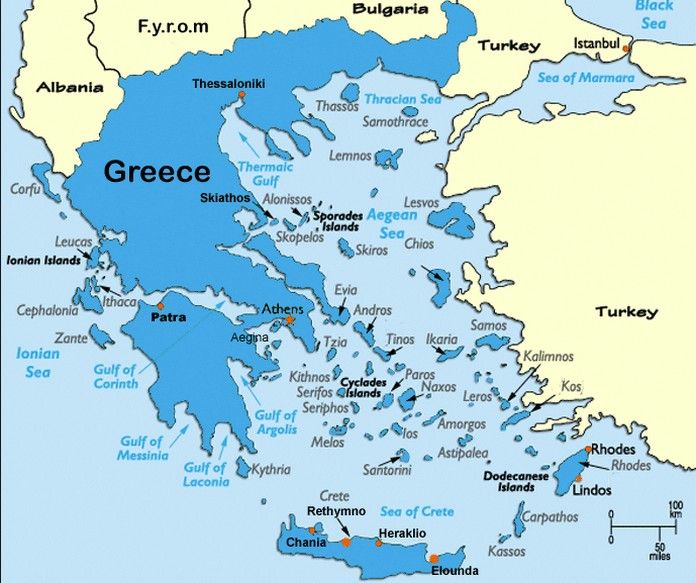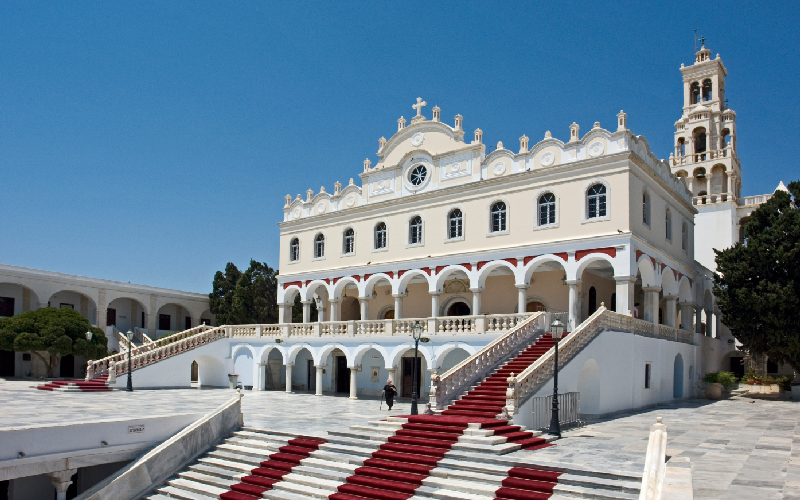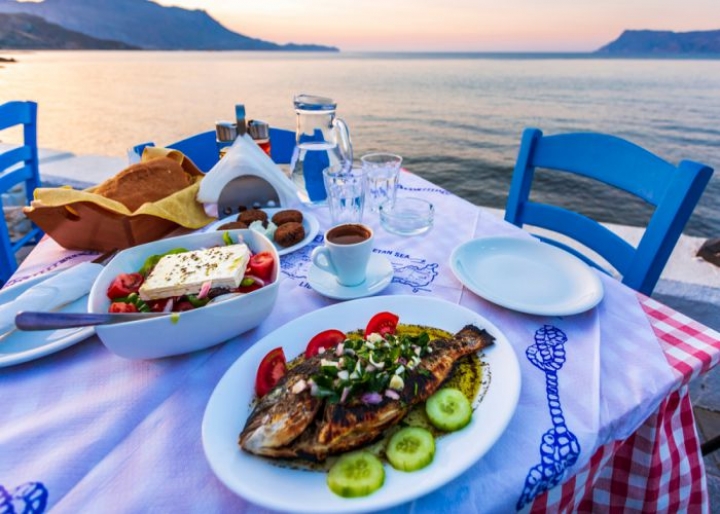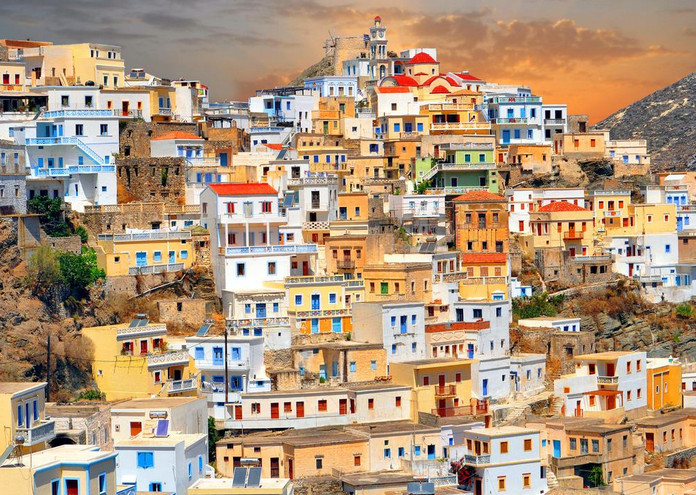A Portrait of the Greek Islands
It’s a known fact that Greece is one of the most visited countries in Europe. On the other hand, it’s also one of the least known. At a geographical crossroads, the modern Greek state dates only from 1830 and combines elements of the Balkans, the Middle East, and the Mediterranean.

Of the thousands of Greek islands, only about a hundred are today permanently inhabited. Barely 10% of the country’s population of just over 10 million lives on the islands and for centuries a large number of people from The Greek islands have lived abroad. Currently, there are over 50% of Greeks outside of the country. The proportion of their income sent back to their relatives in the homeland significantly helps island economies. Recently there has been a trend of people going back to their motherland. Expatriate Greeks started returning home which influences the architecture and cuisine on many islands. Islands lying next to each other can have completely different histories.
Most of the islands along sea lanes to the Levant played a crucial role between the decline of Byzantium and the rise of modern Greece. Crete, the Ionian group, and the Cyclades were occupied by the Venetians and therefore greatly influenced by Italian culture. The Northeast Aegean and Dodecanese islands were ruled by Genoese and Crusade invaders in medieval times while Argosaronic isles were completely resettled by Albanian Christians. Island and urban life in contemporary Greece were transformed in the 20th century despite years of occupation and war, including civil war.
RELIGION, LANGUAGE, AND CULTURE
Even though Greece was under Ottoman and Venetian occupation for many centuries, the Greek Orthodox church managed to preserve the religion and language mostly through schools and liturgy. The query Eisai Orthodoxos (Are you Orthodox?) is virtually synonymous with Ellinas eisai? (Are you Greek?).

Today, the Orthodox church still has a lot of power. While no self-respecting couple would dispense with church baptism for their children, civil marriages are now as valid in law as religious service. Sunday Mass is popular, particularly with women, who often socialize there as men do at cafes.
The beautiful and subtle Greek language, that other hallmark of national identity, was for a long time a field of conflict between the written “Katharevousa” and artificial form hastily devised around the time of Independence, and the slowly evolved everyday speech, or “dimotiki” (demotic Greek).
Today’s prevalence of the more supple “dimotiki” was perhaps a foregone conclusion in an oral culture. Storytelling is still as prized in Greece as in Homer’s time, with conversation pursued its own sake in “kafenia”. The bohemian tradition is still alive with the poet- lyricists such as Manos Eleftheriou, Nikos Gatsos, and Apostolos Kaldaras. Collaborations such as theirs have produced accessible works which have played an important role in keeping “dimotiki” alive from the 19th century until today.
HOME LIFE
The family persists as the basic Greek social unit. Under traditional island land distribution and agricultural practices, one family could sow, plow and reap its own fields which were very important. Today’s family-run businesses are still a common sight in many port towns. Arranged marriages, though not very common, still exist.

Most single young people live with their parents or another relative until they get married. Children from the smaller islands board with a relative while attending secondary school on the larger island. Even though Greek people love children, Greece has a very low birth rate- in Europe, only Italy’s is lower.
Macho attitudes are still present on the islands and women often forgo any hope of a career in order to look after the house and children. Urban Greek women are seeing a rise in status as new imported attitudes have started to creep in. However, no amount of outside influence is able to endanger the essentially Greek way of life, which remains vehemently traditional.
Vernacular Architecture on the Greek Islands
Greek island architecture varies greatly even between neighboring islands. Even though the generic island house does not exist, there are still some common characteristics within and between island groups. The Venetians in Crete, the Cyclades, Ionian islands and the Dodecanese, and the Ottomans in the Northeast Aegean strongly influenced the native building styles that were developed by vernacular builders.

Venetian- style townhouses on Crete date from Venice’s 15th to 17th- century occupation. Often built around a courtyard, the ground floor was used as a warehouse.
Lesbian pyrgoi are fortified towers- dwellings at the center of a farming estate. First built in the 18th century, most surviving examples are from the 19th century and are found near Mytilini town.
Sifnos archontiko or townhouses are found typically in Kastro, Artemonas and Katavati. They have two storeys, as opposed to the one-storey rural cottage.
Windmills are found on most of the islands in the Cyclades and Dodecanese that used to grow their own wheat. The mills initially functioned between July and September, after the harvest. Only a few work today, except as living museums.
KASTRO ARCHITECTURE
The Castro or fortress dwelling of Antiparos dates from the 15th century. It is the purest form of a Venetian pirate-safe town plan in the Cyclades. Kastro housefronts with their right-angled staircases, face either onto a central courtyard or a grid of narrow lanes with limited access from outside. The seaward walls have tiny windows. Kastra are found on Sikinos, Kimolos, Sifnos, Antiparos and Folegandros.
LOCAL BUILDING METHODS AND MATERIALS
Lava masonry is found on the volcanic islands of Lesvos, Limnos, Nisyros, and Milos. The versatile and easily split schist is used in the Cyclades, while lightweight lath and plaster indicate Ottoman influence and are prevalent on Samos, Lesvos, the Sporades, and other northern islands. Mud and rubble as a material used for building are common on all the islands but only for modest dwellings. Also popular are the doma or flat roof of tree trunks supporting packed reed canes covered with seaweed and earth.
Marine Life
If we are talking in ocean terms, the Mediterranean and Aegean are small, virtually landlocked seas with a narrow tidal range. This means that relatively little marine life is exposed at low tide, while on the other hand, coastal plants and birds are very often abundant. However, if you snorkel close to the shore or dive below the surface of the coastal waters. you will witness a wealth of plant and animal life.. The creatures range in size from myriad shoals of tiny fish and dainty sea slugs to giant marine turtles, huge fish and imposing spider crabs.
TOP SNORKELLING AREAS
Snorkeling can be enjoyed almost anywhere around the Greek coast, although remote areas are generally more rewarding.
Kefalonia and Zakynthos: you may find a rare loggerhead turtle off the east coast.
Rhodes: wide variety of fish near the village of Lindos, right on the sheltered east coast.
Evvoia: the sheltered waters are rich in sponges.
Santorini: the volcanic rock of the caldera has sharp drop- offs which is great for exploring.
SAFETY TIPS FOR SNORKELLING
Mediterranean storms can arrive out of nowhere so seek local advice about weather and swimming conditions before you go snorkelling.
Do not go snorkelling if jellyfish are nearby.
Take your own snorkel and mask with you to make sure it fits you right and that you are comfortable with it.
Never snorkel unaccompanied.
Wear a T- shirt or wet suit to avoid getting sunburned.
Avoid swimming near river mouths and harbours. The water will be cloudy and there may be risk from boats and pollution.
Always swim near the shore and check where you are from time to time.
The Greek archipelago is the Mediterranean’s crowning jewel.
There are over 3000 of them and if rocky outcroppings are included the number reaches 9500, 140 of which are inhabited. Most of them are in the Aegean, the sea that lies between Greece and Asia Minor.
Delos is in the center of this sea, the home of Apollo, the god of light according to mythology. What islands could have more light than those in the Aegean? These islands are not only unique for their sun and beaches. There is also their natural beauty, their lacy coastline with its dazzling white beaches and the blue sea ruffled in summer by the cooling meltemi wind.
There are the villages gazing at the sun, the castles, churches and monasteries. History and civilization go back four to five thousand years ago here.
All the islands are beautiful but each one has its own charm and history Starting with the islands of the Argosaronic gulf, which are close to Athens, we proceed to the Cyclades, the so- called “white islands”, from their dazzling white villages perched on bare rock, creating a strong contrast to the blue sea. Cosmopolitan Mykonos and stunning Santorini are part of these islands. East of the Cyclades are the Dodecanese with fabulous Rhodes, an international tourist center and Kos with its “International Hippocratic Foundation”.
The second largest island in Greece, Euboea, is another entity, along with Sporades, verdant islands with their own special flavor. Opposite are the islands of the North and East Aegean. Among them are large islands of Lesbos, Chios and Samos. These are Aegean islands. There are also the Ionian islands, a separate entity lying along the coast of Western Greece. These include lovely Corfu and Ithaca, the home of Odysseus. All are green and have a different look and culture than the Aegean islands.
Crete, the largest island in Greece, has to be treated on its own. Volumes have been written about Minoan civilization founded 4000 years ago, not to mention its natural beauty, its renowned ravines and gorgeous sand beaches.
Read in Serbian => Predstavljamo Grčka Ostrva